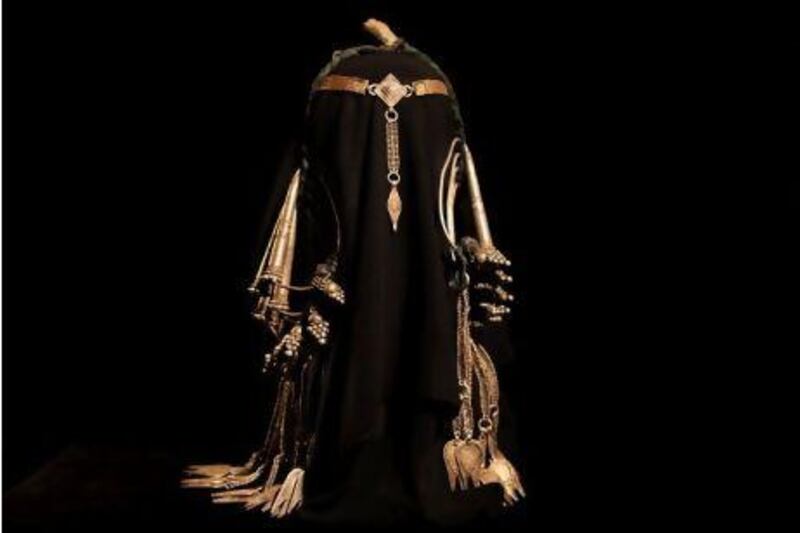Perhaps the most striking thing about this head piece is its weight. It is cast from silver, and the woman who wore it would have carried more than a kilogram of metal on her head.
It would also have been her most precious possession, forming part of her dowry or a gift from her husband and to be worn only at weddings or celebrations.
Video: 1. Silver headdress
Dr Ahmed al Khoori explains the significance of this rare artifact of Emirati cultural past.
--------------------------
The quality of the craftsmanship shows it was made somewhere on the east coast of the Arabian Peninsula, most likely Fujairah or Oman. The silver was probably obtained by melting down Maria Therese thalers, the universally accepted currency of much of the Arab world.
Maria Therese thalers were named in honour of the empress of the old Austrian Hungarian Empire and were first minted in Austria in 1751. (It is thought that the word 'dollar' is derived from thaler.) Nearly 400 million were eventually struck at mints as far apart as London and Mumbai. Since 1780, they have all carried the same date.
At least 30 thalers would have been needed to make this headdress. The hanging sections end in a design based on the hand of Fatima, a charm designed to ward off evil and which was inspired by Fatima, the daughter of the Prophet Mohammed.
The large silver cones that hang on either side of the piece can actually be detached and worn as earrings, an experience almost as weighty as the headdress itself.





